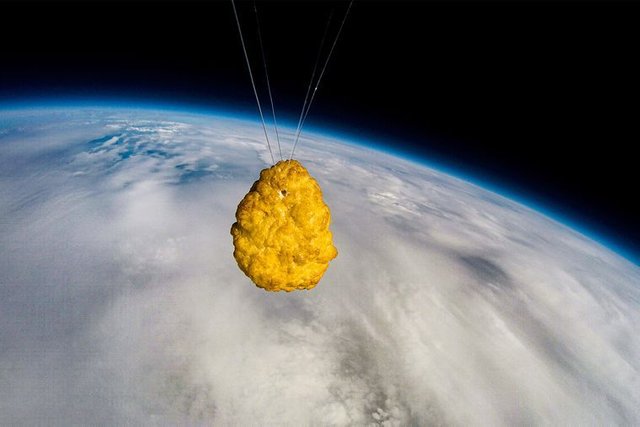The Atmosphere: Earth’s Cozy 5-Story Shield 🌍
✨It’s just like a blanket that protects us from the harshness of space — from the cold 🧊, solar radiation ☀️, or extreme heat 🔥…
This atmosphere is divided into five layers:
1️⃣ The First Layer: The Troposphere
This is the layer we live in, and it’s where weather happens ⛈️🌦️
It extends up to 8–15 kilometers depending on your location on the planet.
This is the zone where all the weather action takes place: clouds, rain, thunderstorms ⚡ — everything that happens in the sky happens here.
It contains about 75% of the atmosphere’s mass, and for every 1 kilometer you go up, the temperature drops by 6°C 🌡️
If you’re in a plane flying at 10 km, you’ll see the storms below you and the sky perfectly clear above you 🛫☁️✨
2️⃣ The Second Layer: The Stratosphere
Starts at 15 kilometers above Earth’s surface and goes up to 50 kilometers 🧭
This layer is super important because it contains the ozone layer 🌀, which absorbs harmful ultraviolet rays.
The air here is very dry and relatively hot because of all that radiation absorption.
Weather balloons 🎈 reach this area and usually carry cameras and record footage — sometimes people even send up funny things like a chicken nugget 🍗 or a burger 🍔 to celebrate special occasions.
Once the balloon pops at around 20–30 km due to low air pressure, it comes back down, and the nugget or burger is retrieved after being exposed to the unique atmospheric conditions of this layer.
3️⃣ The Third Layer: The Mesosphere
This is where meteors burn up! ☄️🔥
This layer turns meteors and shooting stars into fireworks in the sky ✨
Some burn up before reaching here, but the bigger ones — real meteoroids — can sometimes partially make it to Earth because of their size.
They burn here because the mesosphere is the first layer with enough air or gas particles to create friction.
The layers above it have air so thin, it’s basically like being in near-empty space 🌌
4️⃣ The Fourth Layer: The Thermosphere
The gateway to space 🚀
From 85 km above Earth to around 600 km!
This is where the International Space Station orbits 🛰️
And where the aurora (northern/southern lights) happens 💫
The temperature here reaches up to 2000°C due to oxygen and nitrogen molecules absorbing sunlight.
But wait! 🤔 Don’t say I lied to you if you ever go there 😅
There’s no real sense of “heat” here, because there are so few molecules. Even if they’re moving insanely fast, you won’t feel heat unless there’s enough of them to collide with you — and there isn’t.
And if there were lots of oxygen, you’d actually burn to death from the heat!
That’s also why the space station doesn’t burn up while orbiting — there’s not enough resistance to heat it up 🔥
5️⃣ The Fifth Layer: The Exosphere
The underrated layer 😢
Many scientists don’t even count it, but it starts at 600 km and goes up to 10,000 km until it gradually fades into space.
The air here is made of hydrogen and helium instead of oxygen and nitrogen.
Far-out satellites orbit here because it’s super spacious and has almost no resistance.
It’s practically space here, yet still technically under Earth’s gravitational pull 🛰️💫
You can think of the atmosphere like a five-story house 🏠:
First floor: busy and eventful (weather).
Second floor: calm and protected by the ozone layer.
Third floor: fireworks show 😁.
Fourth floor: full of cosmic adventures.
Fifth floor: the edge that separates you from the stars ♥️✨
